Walid Bechkit(Professor at Université de Lyon, INSA Lyon, France)
Low cost Wireless Sensor Networks for Air Quality Monitoring
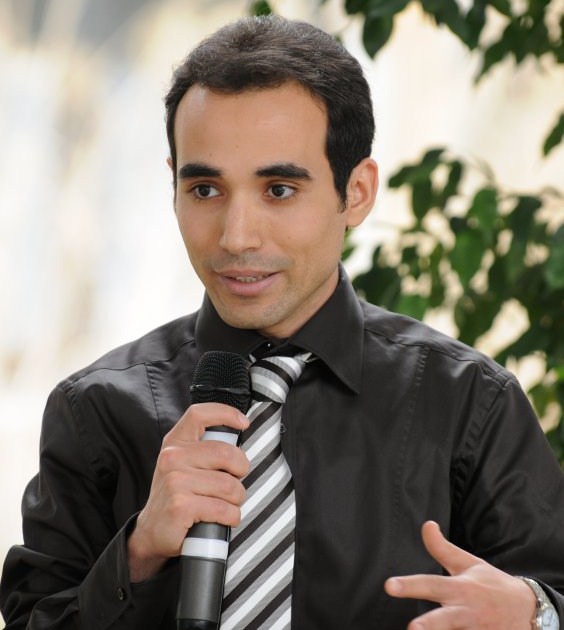 Bio: Walid Bechkit is an associate professor with the Telecommunications department at INSA de Lyon, holding a joint appointment with the CITI lab since Fall 2013. He obtained his Ph.D. in System and Information Technology from the Compiegne University of Technology in 2012 (Best thesis award) and his engineering degree in Computer Science from the National School of Computer Science of Algiers in 2009 (Valedictorian). His main research interests revolve around wireless sensor networks and mainly deployment, scheduling, energy saving, topology control and security issues. He leads since 2015 a number of projects dealing with the deployment of wireless sensor network for air quality monitoring: IMU UrPolSens (2015-2018), PEPS Capt-PolAir (2016) and IMU-3M’Air (2018-2021).
Bio: Walid Bechkit is an associate professor with the Telecommunications department at INSA de Lyon, holding a joint appointment with the CITI lab since Fall 2013. He obtained his Ph.D. in System and Information Technology from the Compiegne University of Technology in 2012 (Best thesis award) and his engineering degree in Computer Science from the National School of Computer Science of Algiers in 2009 (Valedictorian). His main research interests revolve around wireless sensor networks and mainly deployment, scheduling, energy saving, topology control and security issues. He leads since 2015 a number of projects dealing with the deployment of wireless sensor network for air quality monitoring: IMU UrPolSens (2015-2018), PEPS Capt-PolAir (2016) and IMU-3M’Air (2018-2021).
Chiara Buratti (Professor at U. of Bologna, Italy)
Wireless Technologies for the Internet of Things
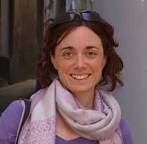 Bio: Chiara Buratti received the MSc degree in Telecommunication Engineering and the PhD degree from the University of Bologna in 2003 and 2009, respectively. Since 2011, she has been a Research Associate at the University of Bologna. Her research interests are on wireless sensor networks and Internet-of-Things, with particular attention to MAC and routing protocols, and Software Defined Networking-based solutions for IoT. She collaborated in many European projects, and she has been responsible for the Bologna site of the EuWIn platform developed within the NoE Newcom#. She won the 2012 Intel Early Career Faculty Honor Program award. She is Co-Chair of the EWG on IoT of the Cost Action IRACON.
Bio: Chiara Buratti received the MSc degree in Telecommunication Engineering and the PhD degree from the University of Bologna in 2003 and 2009, respectively. Since 2011, she has been a Research Associate at the University of Bologna. Her research interests are on wireless sensor networks and Internet-of-Things, with particular attention to MAC and routing protocols, and Software Defined Networking-based solutions for IoT. She collaborated in many European projects, and she has been responsible for the Bologna site of the EuWIn platform developed within the NoE Newcom#. She won the 2012 Intel Early Career Faculty Honor Program award. She is Co-Chair of the EWG on IoT of the Cost Action IRACON.
Laurent Clavier (Professor at IMT-Lille/Douai,France)
Interference in IoT Networks
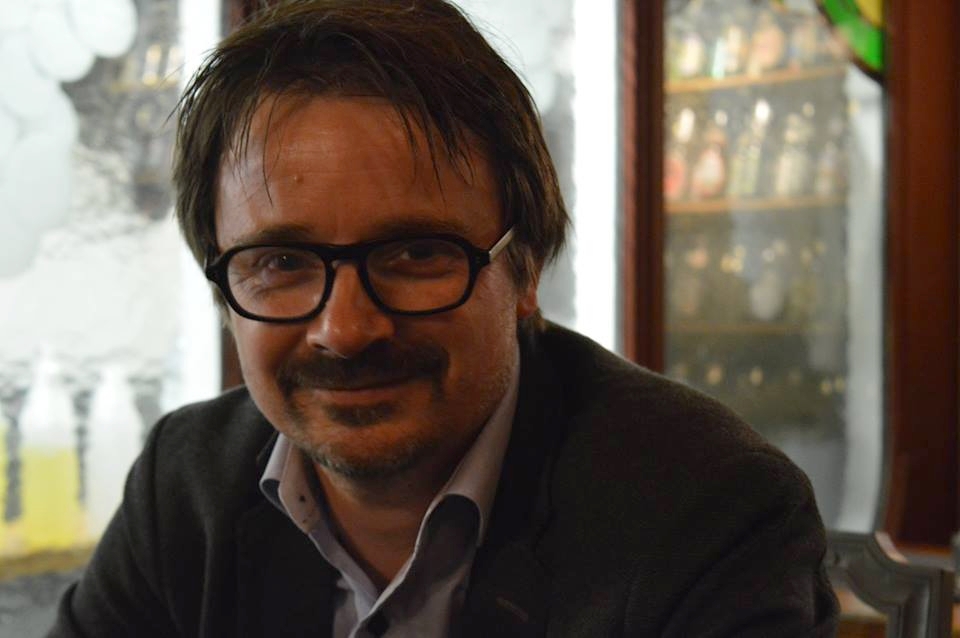 Bio: Laurent Clavier received his PhD degree in signal processing in TELECOM Bretagne in Brest, France and the HDR degree from Lille University, France, in 2009. He is, since October 2011, Professor in Mines-Telecom institute (IMT Lille Douai). He makes his research in IEMN (UMR CNRS 8520 - Institut d'Electronique de Microélectronique et de Nanotechnologie) and in IRCICA (USR CNRS 3380 - Institut de Recherche sur les composants logiciels et matériels pour l'Information et la Communication Avancée). His research activities concern digital communications and the physical layer of wireless networks, more specifically energy autonomous sensor networks. He is particularly interested in interference statistical modelling, in alpha-stable distributions and copulas. He is responsible of the research axis « Telecommunication Circuits and Systems » in IEMN. He is a steering committee member of the COST action CA-15104 IRACON « Inclusive Radio Communications Net-works for 5G and beyond ».
Bio: Laurent Clavier received his PhD degree in signal processing in TELECOM Bretagne in Brest, France and the HDR degree from Lille University, France, in 2009. He is, since October 2011, Professor in Mines-Telecom institute (IMT Lille Douai). He makes his research in IEMN (UMR CNRS 8520 - Institut d'Electronique de Microélectronique et de Nanotechnologie) and in IRCICA (USR CNRS 3380 - Institut de Recherche sur les composants logiciels et matériels pour l'Information et la Communication Avancée). His research activities concern digital communications and the physical layer of wireless networks, more specifically energy autonomous sensor networks. He is particularly interested in interference statistical modelling, in alpha-stable distributions and copulas. He is responsible of the research axis « Telecommunication Circuits and Systems » in IEMN. He is a steering committee member of the COST action CA-15104 IRACON « Inclusive Radio Communications Net-works for 5G and beyond ».
Marco Di Renzo(CNRS / Paris-Saclay University, Paris, France)
Stochastic Geometry Modeling and Optimization of Cellular Networks – Bridging Accuracy and Complexity
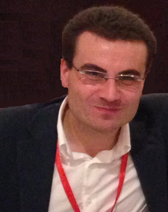 Bio: Marco DI RENZO was born in L'Aquila, Italy, in 1978. He received the Laurea (cum laude) and Ph.D. degrees in electrical engineering from the University of L'Aquila, Italy, in 2003 and 2007, respectively, and the Habilitation à Diriger des Recherches (Doctor of Science) degree from University Paris-Sud, France, in 2013. Since 2010, he has been a Chargé de Recherche CNRS (CNRS Associate Professor) in the Laboratory of Signals and Systems (L2S) of Paris-Saclay University - CNRS, CentraleSupélec, Univ Paris Sud, Paris, France. He serves as the Associate Editor-in-Chief of IEEE Communications Letters, and as an Editor of IEEE Transactions on Communications, and IEEE Transactions on Wireless Communications. He is a Distinguished Lecturer of the IEEE Vehicular Technology Society and IEEE Communications Society, and a Senior Member of the IEEE. He is a recipient of several awards, including the 2013 IEEE-COMSOC Best Young Researcher Award for Europe, Middle East and Africa, the 2013 NoE-NEWCOM# Best Paper Award, the 2014-2015 Royal Academy of Engineering Distinguished Visiting Fellowship, the 2015 IEEE Jack Neubauer Memorial Best System Paper Award, the 2015-2018 CNRS Award for Excellence in Research and Ph.D. Supervision, the 2016 MSCA Global Fellowship (declined), the 2017 SEE-IEEE Alain Glavieux Award, the 2018 IEEE ICNC Silver Contribution Award, and 6 Best Paper Awards at IEEE conferences (2012 and 2014 IEEE CAMAD, 2013 IEEE VTC-Fall, 2014 IEEE ATC, 2015 IEEE ComManTel, 2017 IEEE SigTelCom).
Bio: Marco DI RENZO was born in L'Aquila, Italy, in 1978. He received the Laurea (cum laude) and Ph.D. degrees in electrical engineering from the University of L'Aquila, Italy, in 2003 and 2007, respectively, and the Habilitation à Diriger des Recherches (Doctor of Science) degree from University Paris-Sud, France, in 2013. Since 2010, he has been a Chargé de Recherche CNRS (CNRS Associate Professor) in the Laboratory of Signals and Systems (L2S) of Paris-Saclay University - CNRS, CentraleSupélec, Univ Paris Sud, Paris, France. He serves as the Associate Editor-in-Chief of IEEE Communications Letters, and as an Editor of IEEE Transactions on Communications, and IEEE Transactions on Wireless Communications. He is a Distinguished Lecturer of the IEEE Vehicular Technology Society and IEEE Communications Society, and a Senior Member of the IEEE. He is a recipient of several awards, including the 2013 IEEE-COMSOC Best Young Researcher Award for Europe, Middle East and Africa, the 2013 NoE-NEWCOM# Best Paper Award, the 2014-2015 Royal Academy of Engineering Distinguished Visiting Fellowship, the 2015 IEEE Jack Neubauer Memorial Best System Paper Award, the 2015-2018 CNRS Award for Excellence in Research and Ph.D. Supervision, the 2016 MSCA Global Fellowship (declined), the 2017 SEE-IEEE Alain Glavieux Award, the 2018 IEEE ICNC Silver Contribution Award, and 6 Best Paper Awards at IEEE conferences (2012 and 2014 IEEE CAMAD, 2013 IEEE VTC-Fall, 2014 IEEE ATC, 2015 IEEE ComManTel, 2017 IEEE SigTelCom).
Malcolm Egan (Professor at Université de Lyon, INSA Lyon, France)
Interference in IoT Networks
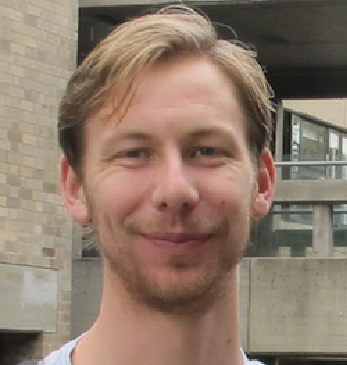 Bio: Malcolm Egan received the Ph.D. in Electrical Engineering in 2014 from the University of Sydney, Australia. He is currently an Assistant Professor in CITI, a joint laboratory between INRIA, INSA Lyon and Université de Lyon, France. Previously he was with the Laboratoire de Mathématiques, Université Blaise Pascal, France and the Department of Computer Science, Czech Technical University in Prague, Czech Republic. He is also currently an associate editor for IEEE Communications Letters. His research interests are in the areas of information theory and statistical signal processing with applications in wireless and molecular communications.
Bio: Malcolm Egan received the Ph.D. in Electrical Engineering in 2014 from the University of Sydney, Australia. He is currently an Assistant Professor in CITI, a joint laboratory between INRIA, INSA Lyon and Université de Lyon, France. Previously he was with the Laboratoire de Mathématiques, Université Blaise Pascal, France and the Department of Computer Science, Czech Technical University in Prague, Czech Republic. He is also currently an associate editor for IEEE Communications Letters. His research interests are in the areas of information theory and statistical signal processing with applications in wireless and molecular communications.
Christophe Fourtet (CS0, Sigfox, France)
Round table
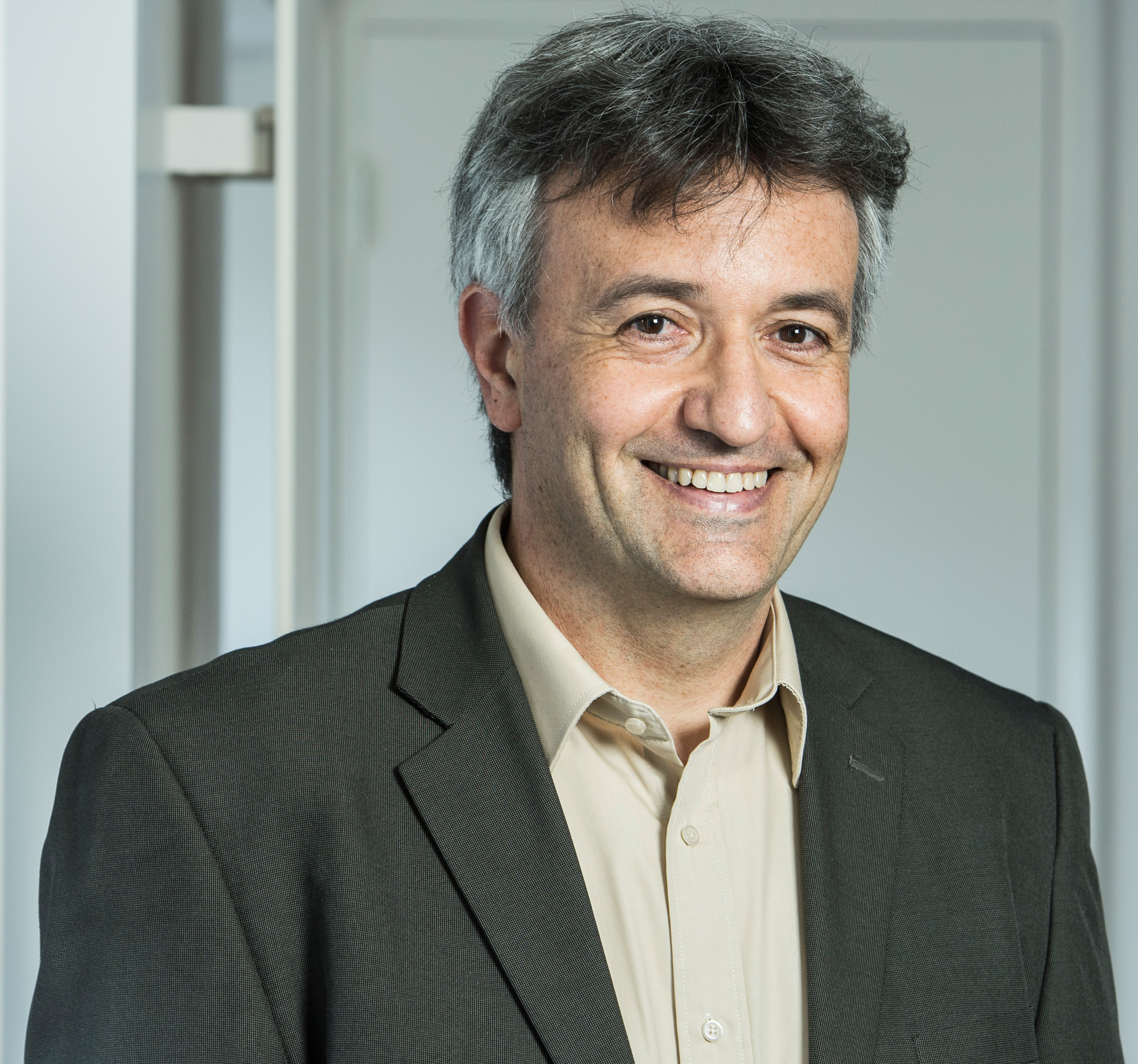 Bio: Graduated from INSA de Lyon and holds a DEA in electromagnetism, Christophe Fourtet is a long time enthusiast of science and technology, particularly radio and electromagnetism. This passion will take him to work on multiple radio projects in companies such as Thomson, TALCO, SAGEM, MOTOROLA, as a design engineer and as a technical manager. He has been working on topics such as PMR, then pioneering digital PMR as well as digital cellular, and then 3G / LTE. In fact, caught in the 90s as many radio specialists by the wave of cellular and its quest of broadband, he made a 180 degree turn starting to work on more "frugal" and "low footprint" radio systems, combining low power and high performance for a given service. The modern UNB (Ultra Narrow Band) began to be born, and it is his meeting with Ludovic Le Moan, that triggered the spark of SIGFOX in 2010.
Bio: Graduated from INSA de Lyon and holds a DEA in electromagnetism, Christophe Fourtet is a long time enthusiast of science and technology, particularly radio and electromagnetism. This passion will take him to work on multiple radio projects in companies such as Thomson, TALCO, SAGEM, MOTOROLA, as a design engineer and as a technical manager. He has been working on topics such as PMR, then pioneering digital PMR as well as digital cellular, and then 3G / LTE. In fact, caught in the 90s as many radio specialists by the wave of cellular and its quest of broadband, he made a 180 degree turn starting to work on more "frugal" and "low footprint" radio systems, combining low power and high performance for a given service. The modern UNB (Ultra Narrow Band) began to be born, and it is his meeting with Ludovic Le Moan, that triggered the spark of SIGFOX in 2010.
Jean-Marie Gorce (Professor at Université de Lyon, INSA Lyon, France)
Information Theory in the Finite BlockLength Regime Applied to IoT
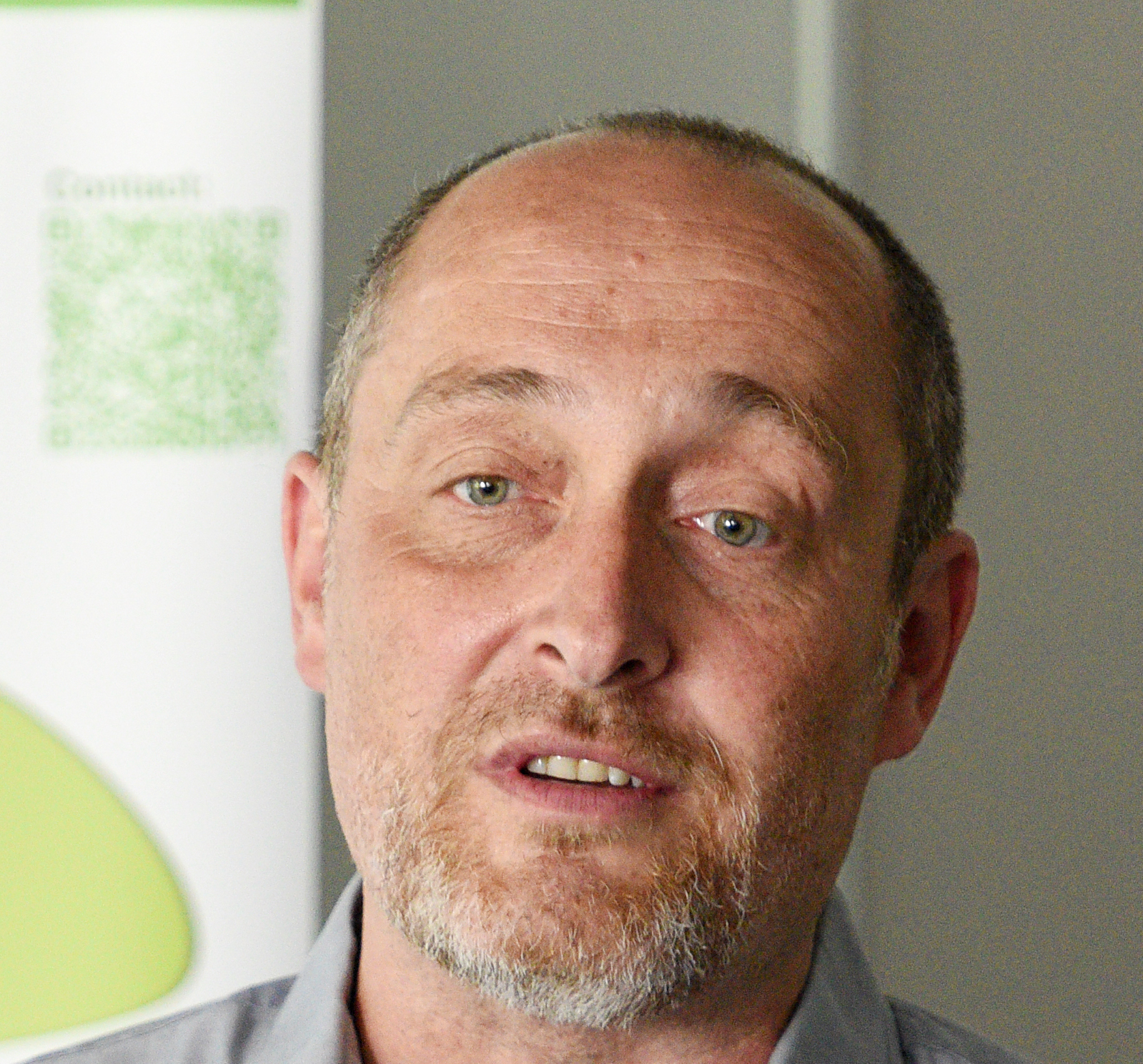 Bio: Jean-Marie Gorce received the M.Sc. and Ph.D. degree in Electrical Engineering from the Institut National des Sciences Appliquées (INSA) Lyon, France, in 1993 and 1998, respectively. He is currently a Professor at INSA, Universit\'{e} de Lyon, and he is a research member of the Institut National de Recherche en Informatique et en Automatique (INRIA). He was a co-founder in 2001 of the Centre for Innovation in Telecommunications and Integration of Services (CITIlab). He is currently vice delegate for research at INRIA Grenoble, and he holds the Internet of Things Industrial and Research Chair of INSA Lyon sponsored by SPIE ICS. He was a visiting scholar at Princeton University, NJ, USA, in 2013-2014. He has been the principal investigator of several French and European sponsored projects related to wireless networks and he is the scientific coordinator for the experimental facility FIT-CorteXlab. He is an associate editor of the Eurasip Journal of Wireless Communications and Networking (Springer). His research interests concern wireless networking and communication theory, focusing on realistic modeling, wireless system optimization, and performance assessment considering both infrastructure-based and ad-hoc networks. He has co-published more than 150 conference and journal articles.
Bio: Jean-Marie Gorce received the M.Sc. and Ph.D. degree in Electrical Engineering from the Institut National des Sciences Appliquées (INSA) Lyon, France, in 1993 and 1998, respectively. He is currently a Professor at INSA, Universit\'{e} de Lyon, and he is a research member of the Institut National de Recherche en Informatique et en Automatique (INRIA). He was a co-founder in 2001 of the Centre for Innovation in Telecommunications and Integration of Services (CITIlab). He is currently vice delegate for research at INRIA Grenoble, and he holds the Internet of Things Industrial and Research Chair of INSA Lyon sponsored by SPIE ICS. He was a visiting scholar at Princeton University, NJ, USA, in 2013-2014. He has been the principal investigator of several French and European sponsored projects related to wireless networks and he is the scientific coordinator for the experimental facility FIT-CorteXlab. He is an associate editor of the Eurasip Journal of Wireless Communications and Networking (Springer). His research interests concern wireless networking and communication theory, focusing on realistic modeling, wireless system optimization, and performance assessment considering both infrastructure-based and ad-hoc networks. He has co-published more than 150 conference and journal articles.
Oana Iova (Associate Professor at Université de Lyon, INSA Lyon, France)
Round table
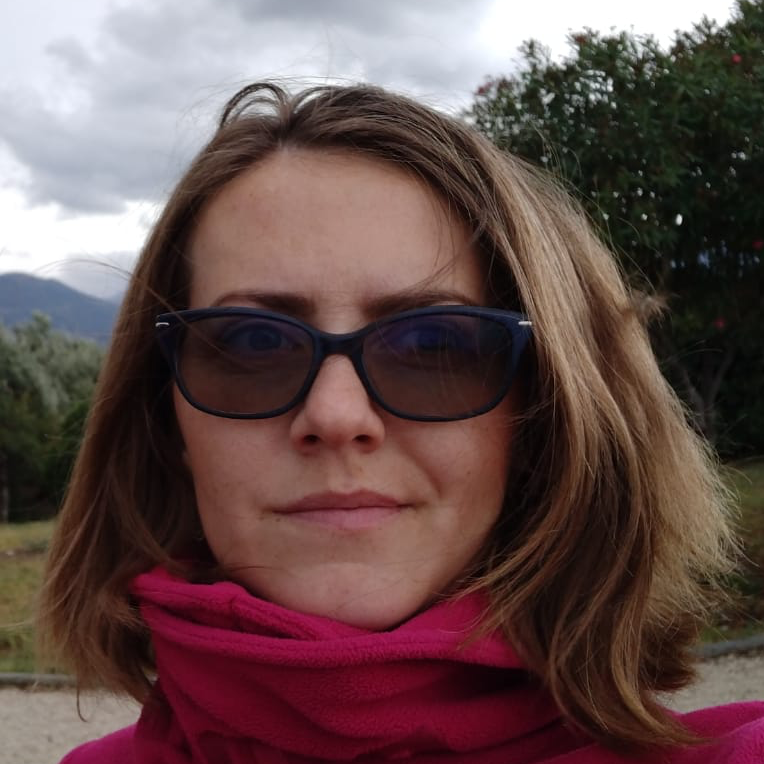 Bio: Dr. Oana Iova is an associate professor at INSA Lyon since 2017 and a member of the Inria Agora team. She obtained her PhD in 2014 from the University of Strasbourg and worked for 3 years as a postdoctoral researcher at the University of Trento, Italy. Her research focuses on wireless networks for the Internet of Things, using as building blocks both new long-range wireless communication technologies and conventional short-range technologies.
Bio: Dr. Oana Iova is an associate professor at INSA Lyon since 2017 and a member of the Inria Agora team. She obtained her PhD in 2014 from the University of Strasbourg and worked for 3 years as a postdoctoral researcher at the University of Trento, Italy. Her research focuses on wireless networks for the Internet of Things, using as building blocks both new long-range wireless communication technologies and conventional short-range technologies.
Philippe MARY (Professor at INSA Rennes, France)
Information Theory in the Finite BlockLength Regime Applied to IoT
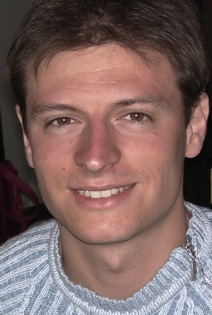 Bio: Philippe Mary (S'06-M'09) received his M.Sc. in Signal Processing and Digital Communications from the University of Nice Sophia-Antipolis and the Dipl. Ing. degree in electrical engineering from the Polytechnic University School of Nice Sophia-Antipolis (France) both in 2004. He received his PhD in electrical engineering from the National Institute of Applied Sciences of Lyon in 2008 and his Habilitation degree (HDR) from University of Rennes 1 in 2018. During his PhD, he was with France Telecom R&D and he worked on the analytical performance study for mobile communications considering shadowing and fading and multi-user detectors for wireless communications. From 2008 to 2009, he was post-doctoral researcher at ETIS Laboratory in Cergy-Pontoise, working on resource allocations in ultra-wide band systems. In September 2009, Dr. Mary joined the Digital Communication Systems department of INSA Rennes and IETR laboratory as Associate Professor. His research interests include signal processing for digital communications, resource allocation and finite block length communication theory.
Bio: Philippe Mary (S'06-M'09) received his M.Sc. in Signal Processing and Digital Communications from the University of Nice Sophia-Antipolis and the Dipl. Ing. degree in electrical engineering from the Polytechnic University School of Nice Sophia-Antipolis (France) both in 2004. He received his PhD in electrical engineering from the National Institute of Applied Sciences of Lyon in 2008 and his Habilitation degree (HDR) from University of Rennes 1 in 2018. During his PhD, he was with France Telecom R&D and he worked on the analytical performance study for mobile communications considering shadowing and fading and multi-user detectors for wireless communications. From 2008 to 2009, he was post-doctoral researcher at ETIS Laboratory in Cergy-Pontoise, working on resource allocations in ultra-wide band systems. In September 2009, Dr. Mary joined the Digital Communication Systems department of INSA Rennes and IETR laboratory as Associate Professor. His research interests include signal processing for digital communications, resource allocation and finite block length communication theory.
Samir Perlaza (Research Scientist at Inria, France),
Simultaneous Information and Energy Transmission
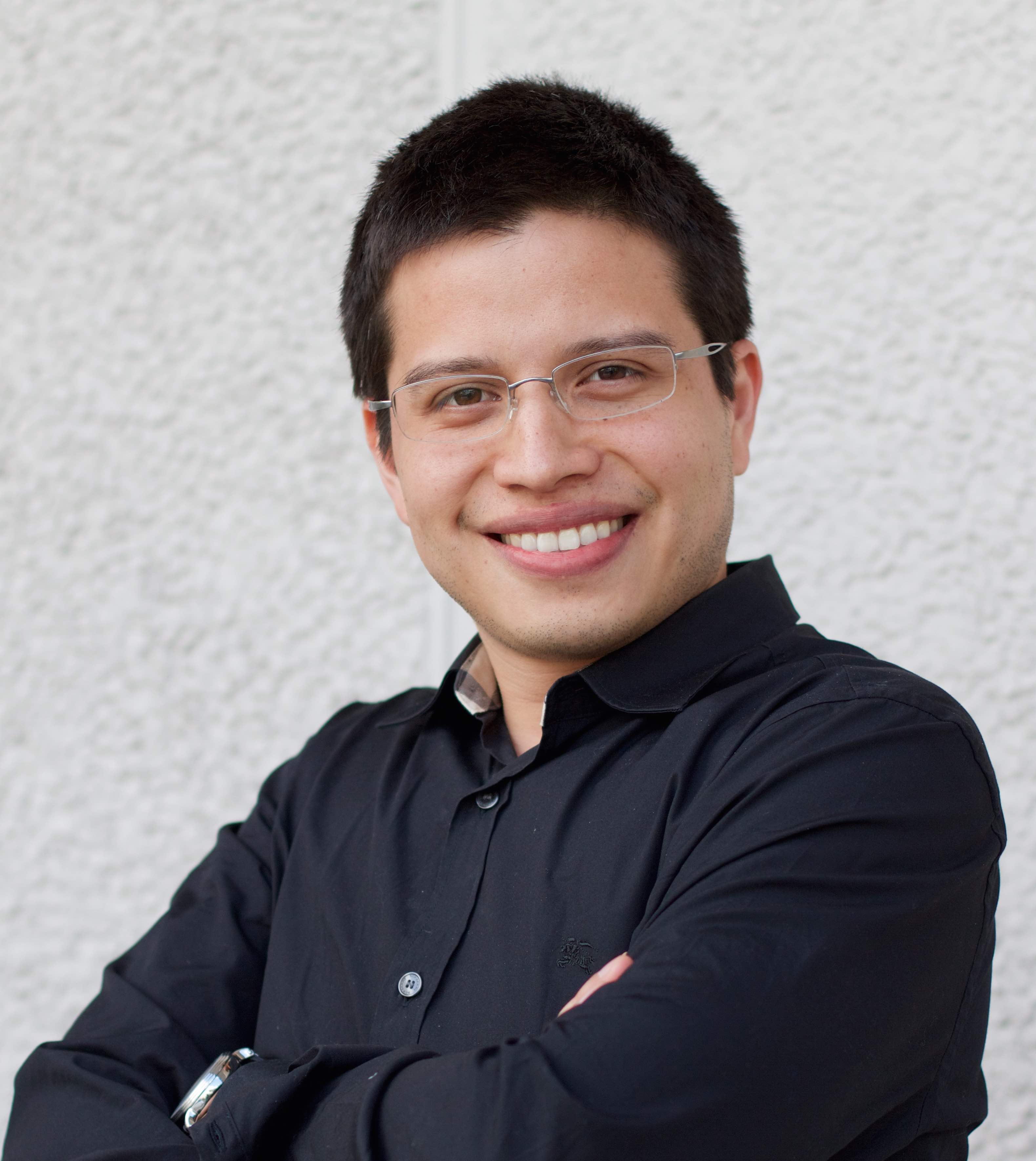 Bio: Samir M. Perlaza is a chargé de recherche with the Institut National de Recherche en Informatique et en Automatique (INRIA), France, and a visiting research scholar at the Department of Electrical Engineering at Princeton University (NJ, USA). He received the M.Sc. and Ph.D. degrees from Ecole Nationale Supérieure des Télécommunications (Telecom ParisTech), Paris, France, in 2008 and 2011, respectively. Previously, from 2008 to 2011, he was a Research Engineer at France Télécom – Orange Labs (Paris, France). He has held long-term academic appointments at the Alcatel-Lucent Chair in Flexible Radio at Supélec (Gif-sur-Yvette, France); at Princeton University (Princeton, NJ) and at the University of Houston (Houston, TX). His research interests lie in the overlap of signal processing, information theory, game theory and wireless communications. Dr. Perlaza is an Editor of the IEEE Transactions on Communications and the IET Smart Grids. He has been distinguished by the European Commission with an Alban Fellowship in 2006 and a Marie Skłodowska-Curie Fellowship in 2015.
Bio: Samir M. Perlaza is a chargé de recherche with the Institut National de Recherche en Informatique et en Automatique (INRIA), France, and a visiting research scholar at the Department of Electrical Engineering at Princeton University (NJ, USA). He received the M.Sc. and Ph.D. degrees from Ecole Nationale Supérieure des Télécommunications (Telecom ParisTech), Paris, France, in 2008 and 2011, respectively. Previously, from 2008 to 2011, he was a Research Engineer at France Télécom – Orange Labs (Paris, France). He has held long-term academic appointments at the Alcatel-Lucent Chair in Flexible Radio at Supélec (Gif-sur-Yvette, France); at Princeton University (Princeton, NJ) and at the University of Houston (Houston, TX). His research interests lie in the overlap of signal processing, information theory, game theory and wireless communications. Dr. Perlaza is an Editor of the IEEE Transactions on Communications and the IET Smart Grids. He has been distinguished by the European Commission with an Alban Fellowship in 2006 and a Marie Skłodowska-Curie Fellowship in 2015.
Petar Popovski(Professor at Aalborg U., Danemark)
Wireless Access in Ultra-Reliable Low-Latency Communication (URLLC)
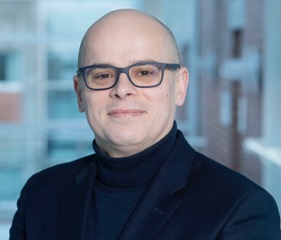 Bio: Petar Popovski is a Professor of Wireless Communications with Aalborg University. He received his Dipl. Ing and Magister Ing. degrees in communication engineering from the University of Sts. Cyril and Methodius in Skopje and the Ph.D. degree from Aalborg University in 2005. He has over 300 publications in journals, conference proceedings, and edited books. He holds over 30 patents and patent applications. He is a Fellow of IEEE. He received an ERC Consolidator Grant (2015), the Danish Elite Researcher award (2016), IEEE Fred W. Ellersick prize (2016) and IEEE Stephen O. Rice prize (2018). He is currently a Steering Committee Member of IEEE SmartGridComm and previously served as a Steering Committee Member of the IEEE INTERNET OF THINGS JOURNAL. He is currently an Area Editor of the IEEE TRANSACTIONS ON WIRELESS COMMUNICATIONS. His research interests are in the area of wireless communication and networking, and communication/information theory.
Bio: Petar Popovski is a Professor of Wireless Communications with Aalborg University. He received his Dipl. Ing and Magister Ing. degrees in communication engineering from the University of Sts. Cyril and Methodius in Skopje and the Ph.D. degree from Aalborg University in 2005. He has over 300 publications in journals, conference proceedings, and edited books. He holds over 30 patents and patent applications. He is a Fellow of IEEE. He received an ERC Consolidator Grant (2015), the Danish Elite Researcher award (2016), IEEE Fred W. Ellersick prize (2016) and IEEE Stephen O. Rice prize (2018). He is currently a Steering Committee Member of IEEE SmartGridComm and previously served as a Steering Committee Member of the IEEE INTERNET OF THINGS JOURNAL. He is currently an Area Editor of the IEEE TRANSACTIONS ON WIRELESS COMMUNICATIONS. His research interests are in the area of wireless communication and networking, and communication/information theory.
Jean Schwoerer (Orange, France)
Round table
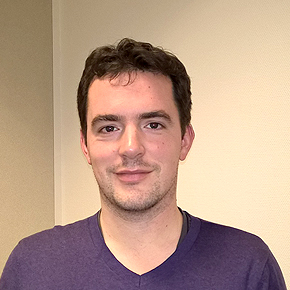 Bio: Jean Schwoerer graduated from the National Institute of Applied Sciences (INSA) in Rennes in 2002. He joined France Telecom R&D in order to achieve his doctoral thesis on the design and testing of a low-speed Ultra Wide Band physical layer for sensor networks, which he defended in 2006. His pursuing work at Orange Labs Grenoble led him to various application of UWB systems from indoor positioning to personal Network (BAN). He continued this topic of connected things by interesting himself to low power radio interfaces for the Internet of Things: Jean is currently leading Orange research activities on IoT Connectivity, from “alternative” radio technologies like LPWA or mesh network up to mobile network technologies with 5G mMTC as a perspective. Additionally, as Orange delegate on IoT topic at 3GPP RAN WG1,2 & 6 he took part to the standardization of NB-IoT and LTE-M. Before that he was representing Orange in ETSI TG28 and IEEE 802 where he wears many contributions on IoT standardization for the Orange group.
Bio: Jean Schwoerer graduated from the National Institute of Applied Sciences (INSA) in Rennes in 2002. He joined France Telecom R&D in order to achieve his doctoral thesis on the design and testing of a low-speed Ultra Wide Band physical layer for sensor networks, which he defended in 2006. His pursuing work at Orange Labs Grenoble led him to various application of UWB systems from indoor positioning to personal Network (BAN). He continued this topic of connected things by interesting himself to low power radio interfaces for the Internet of Things: Jean is currently leading Orange research activities on IoT Connectivity, from “alternative” radio technologies like LPWA or mesh network up to mobile network technologies with 5G mMTC as a perspective. Additionally, as Orange delegate on IoT topic at 3GPP RAN WG1,2 & 6 he took part to the standardization of NB-IoT and LTE-M. Before that he was representing Orange in ETSI TG28 and IEEE 802 where he wears many contributions on IoT standardization for the Orange group.
Jan Sykora(Professor at CTU Prague, Czech Republic)
Wireless Physical Layer Network Coding
 Bio:
Bio: Jan Sykora is a professor in the Faculty of Electrical Engineering at the Czech Technical University in Prague, and a consultant for the communications industry in the fields of advanced coding and signal processing.
Maël Le Treust ( ETIS UMR 8051, Université Paris Seine, Université Cergy-Pontoise, ENSEA, CNRS)
Strategic Communication and Persuasion
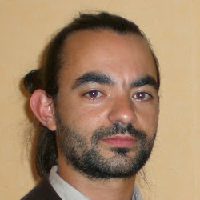 Bio: Le Treust earned his Diplôme d’Etude Approfondies (M.Sc.) degree in Optimization, Game Theory & Economics (OJME) from the Université de Paris VI (UPMC), France in 2008 and his Ph.D. degree from the Université de Paris Sud XI in 2011, at the Laboratoire des signaux et systèmes (joint laboratory of CNRS, Supélec, Université de Paris Sud XI) in Gif-sur-Yvette, France. Since 2013, he is a CNRS researcher at ETIS laboratory UMR 8051, Université Paris Seine, Université Cergy-Pontoise, ENSEA, CNRS, in Cergy, France. In 2012, he was a post-doctoral researcher at the Institut d'électronique et d'informatique Gaspard Monge (Université Paris-Est) in Marne-la-Vallée, France. In 2012-2013, he was a post-doctoral researcher at the Centre Énergie, Matériaux et Télécommunication (Université INRS ) in Montréal, Canada. From 2008 to 2012, he was a Math T.A. at the Université de Paris I (Panthéon-Sorbonne), Université de Paris VI (UPMC) and Université Paris Est Marne-la-Vallée, France. His research interests are strategic coordination, information theory, Shannon theory, game theory, physical layer security and wireless communications.
Bio: Le Treust earned his Diplôme d’Etude Approfondies (M.Sc.) degree in Optimization, Game Theory & Economics (OJME) from the Université de Paris VI (UPMC), France in 2008 and his Ph.D. degree from the Université de Paris Sud XI in 2011, at the Laboratoire des signaux et systèmes (joint laboratory of CNRS, Supélec, Université de Paris Sud XI) in Gif-sur-Yvette, France. Since 2013, he is a CNRS researcher at ETIS laboratory UMR 8051, Université Paris Seine, Université Cergy-Pontoise, ENSEA, CNRS, in Cergy, France. In 2012, he was a post-doctoral researcher at the Institut d'électronique et d'informatique Gaspard Monge (Université Paris-Est) in Marne-la-Vallée, France. In 2012-2013, he was a post-doctoral researcher at the Centre Énergie, Matériaux et Télécommunication (Université INRS ) in Montréal, Canada. From 2008 to 2012, he was a Math T.A. at the Université de Paris I (Panthéon-Sorbonne), Université de Paris VI (UPMC) and Université Paris Est Marne-la-Vallée, France. His research interests are strategic coordination, information theory, Shannon theory, game theory, physical layer security and wireless communications.
Guillaume Vivier (Sequans, France)
Round table
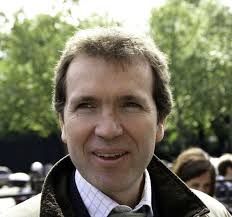 Bio: Dr Guillaume Vivier is graduated from Telecom Paris Tech and received his PhD degree from the University of Pierre and Marie Curie. After 5 years in Alcatel in the design of satellite and microwave communication systems, he joined Motorola in 1998 to contribute to the definition of Systems Beyond 3G. He then held various positions within Motorola Labs. In 2008, he joined Sequans Communications to drive innovation into products. He is currently Director of Advanced Technology and head of the CTO office. Since 2014, he started a 5G activity, to anticipate and contribute to the definition and standardization of 5G and prepare future generation of Sequans’ chipsets.
Bio: Dr Guillaume Vivier is graduated from Telecom Paris Tech and received his PhD degree from the University of Pierre and Marie Curie. After 5 years in Alcatel in the design of satellite and microwave communication systems, he joined Motorola in 1998 to contribute to the definition of Systems Beyond 3G. He then held various positions within Motorola Labs. In 2008, he joined Sequans Communications to drive innovation into products. He is currently Director of Advanced Technology and head of the CTO office. Since 2014, he started a 5G activity, to anticipate and contribute to the definition and standardization of 5G and prepare future generation of Sequans’ chipsets.
 Bio: Jan Sykora is a professor in the Faculty of Electrical Engineering at the Czech Technical University in Prague, and a consultant for the communications industry in the fields of advanced coding and signal processing.
Bio: Jan Sykora is a professor in the Faculty of Electrical Engineering at the Czech Technical University in Prague, and a consultant for the communications industry in the fields of advanced coding and signal processing.
 Bio: Walid Bechkit is an associate professor with the Telecommunications department at INSA de Lyon, holding a joint appointment with the CITI lab since Fall 2013. He obtained his Ph.D. in System and Information Technology from the Compiegne University of Technology in 2012 (Best thesis award) and his engineering degree in Computer Science from the National School of Computer Science of Algiers in 2009 (Valedictorian). His main research interests revolve around wireless sensor networks and mainly deployment, scheduling, energy saving, topology control and security issues. He leads since 2015 a number of projects dealing with the deployment of wireless sensor network for air quality monitoring: IMU UrPolSens (2015-2018), PEPS Capt-PolAir (2016) and IMU-3M’Air (2018-2021).
Bio: Walid Bechkit is an associate professor with the Telecommunications department at INSA de Lyon, holding a joint appointment with the CITI lab since Fall 2013. He obtained his Ph.D. in System and Information Technology from the Compiegne University of Technology in 2012 (Best thesis award) and his engineering degree in Computer Science from the National School of Computer Science of Algiers in 2009 (Valedictorian). His main research interests revolve around wireless sensor networks and mainly deployment, scheduling, energy saving, topology control and security issues. He leads since 2015 a number of projects dealing with the deployment of wireless sensor network for air quality monitoring: IMU UrPolSens (2015-2018), PEPS Capt-PolAir (2016) and IMU-3M’Air (2018-2021). Bio: Chiara Buratti received the MSc degree in Telecommunication Engineering and the PhD degree from the University of Bologna in 2003 and 2009, respectively. Since 2011, she has been a Research Associate at the University of Bologna. Her research interests are on wireless sensor networks and Internet-of-Things, with particular attention to MAC and routing protocols, and Software Defined Networking-based solutions for IoT. She collaborated in many European projects, and she has been responsible for the Bologna site of the EuWIn platform developed within the NoE Newcom#. She won the 2012 Intel Early Career Faculty Honor Program award. She is Co-Chair of the EWG on IoT of the Cost Action IRACON.
Bio: Chiara Buratti received the MSc degree in Telecommunication Engineering and the PhD degree from the University of Bologna in 2003 and 2009, respectively. Since 2011, she has been a Research Associate at the University of Bologna. Her research interests are on wireless sensor networks and Internet-of-Things, with particular attention to MAC and routing protocols, and Software Defined Networking-based solutions for IoT. She collaborated in many European projects, and she has been responsible for the Bologna site of the EuWIn platform developed within the NoE Newcom#. She won the 2012 Intel Early Career Faculty Honor Program award. She is Co-Chair of the EWG on IoT of the Cost Action IRACON. Bio: Laurent Clavier received his PhD degree in signal processing in TELECOM Bretagne in Brest, France and the HDR degree from Lille University, France, in 2009. He is, since October 2011, Professor in Mines-Telecom institute (IMT Lille Douai). He makes his research in IEMN (UMR CNRS 8520 - Institut d'Electronique de Microélectronique et de Nanotechnologie) and in IRCICA (USR CNRS 3380 - Institut de Recherche sur les composants logiciels et matériels pour l'Information et la Communication Avancée). His research activities concern digital communications and the physical layer of wireless networks, more specifically energy autonomous sensor networks. He is particularly interested in interference statistical modelling, in alpha-stable distributions and copulas. He is responsible of the research axis « Telecommunication Circuits and Systems » in IEMN. He is a steering committee member of the COST action CA-15104 IRACON « Inclusive Radio Communications Net-works for 5G and beyond ».
Bio: Laurent Clavier received his PhD degree in signal processing in TELECOM Bretagne in Brest, France and the HDR degree from Lille University, France, in 2009. He is, since October 2011, Professor in Mines-Telecom institute (IMT Lille Douai). He makes his research in IEMN (UMR CNRS 8520 - Institut d'Electronique de Microélectronique et de Nanotechnologie) and in IRCICA (USR CNRS 3380 - Institut de Recherche sur les composants logiciels et matériels pour l'Information et la Communication Avancée). His research activities concern digital communications and the physical layer of wireless networks, more specifically energy autonomous sensor networks. He is particularly interested in interference statistical modelling, in alpha-stable distributions and copulas. He is responsible of the research axis « Telecommunication Circuits and Systems » in IEMN. He is a steering committee member of the COST action CA-15104 IRACON « Inclusive Radio Communications Net-works for 5G and beyond ». Bio: Marco DI RENZO was born in L'Aquila, Italy, in 1978. He received the Laurea (cum laude) and Ph.D. degrees in electrical engineering from the University of L'Aquila, Italy, in 2003 and 2007, respectively, and the Habilitation à Diriger des Recherches (Doctor of Science) degree from University Paris-Sud, France, in 2013. Since 2010, he has been a Chargé de Recherche CNRS (CNRS Associate Professor) in the Laboratory of Signals and Systems (L2S) of Paris-Saclay University - CNRS, CentraleSupélec, Univ Paris Sud, Paris, France. He serves as the Associate Editor-in-Chief of IEEE Communications Letters, and as an Editor of IEEE Transactions on Communications, and IEEE Transactions on Wireless Communications. He is a Distinguished Lecturer of the IEEE Vehicular Technology Society and IEEE Communications Society, and a Senior Member of the IEEE. He is a recipient of several awards, including the 2013 IEEE-COMSOC Best Young Researcher Award for Europe, Middle East and Africa, the 2013 NoE-NEWCOM# Best Paper Award, the 2014-2015 Royal Academy of Engineering Distinguished Visiting Fellowship, the 2015 IEEE Jack Neubauer Memorial Best System Paper Award, the 2015-2018 CNRS Award for Excellence in Research and Ph.D. Supervision, the 2016 MSCA Global Fellowship (declined), the 2017 SEE-IEEE Alain Glavieux Award, the 2018 IEEE ICNC Silver Contribution Award, and 6 Best Paper Awards at IEEE conferences (2012 and 2014 IEEE CAMAD, 2013 IEEE VTC-Fall, 2014 IEEE ATC, 2015 IEEE ComManTel, 2017 IEEE SigTelCom).
Bio: Marco DI RENZO was born in L'Aquila, Italy, in 1978. He received the Laurea (cum laude) and Ph.D. degrees in electrical engineering from the University of L'Aquila, Italy, in 2003 and 2007, respectively, and the Habilitation à Diriger des Recherches (Doctor of Science) degree from University Paris-Sud, France, in 2013. Since 2010, he has been a Chargé de Recherche CNRS (CNRS Associate Professor) in the Laboratory of Signals and Systems (L2S) of Paris-Saclay University - CNRS, CentraleSupélec, Univ Paris Sud, Paris, France. He serves as the Associate Editor-in-Chief of IEEE Communications Letters, and as an Editor of IEEE Transactions on Communications, and IEEE Transactions on Wireless Communications. He is a Distinguished Lecturer of the IEEE Vehicular Technology Society and IEEE Communications Society, and a Senior Member of the IEEE. He is a recipient of several awards, including the 2013 IEEE-COMSOC Best Young Researcher Award for Europe, Middle East and Africa, the 2013 NoE-NEWCOM# Best Paper Award, the 2014-2015 Royal Academy of Engineering Distinguished Visiting Fellowship, the 2015 IEEE Jack Neubauer Memorial Best System Paper Award, the 2015-2018 CNRS Award for Excellence in Research and Ph.D. Supervision, the 2016 MSCA Global Fellowship (declined), the 2017 SEE-IEEE Alain Glavieux Award, the 2018 IEEE ICNC Silver Contribution Award, and 6 Best Paper Awards at IEEE conferences (2012 and 2014 IEEE CAMAD, 2013 IEEE VTC-Fall, 2014 IEEE ATC, 2015 IEEE ComManTel, 2017 IEEE SigTelCom). Bio: Malcolm Egan received the Ph.D. in Electrical Engineering in 2014 from the University of Sydney, Australia. He is currently an Assistant Professor in CITI, a joint laboratory between INRIA, INSA Lyon and Université de Lyon, France. Previously he was with the Laboratoire de Mathématiques, Université Blaise Pascal, France and the Department of Computer Science, Czech Technical University in Prague, Czech Republic. He is also currently an associate editor for IEEE Communications Letters. His research interests are in the areas of information theory and statistical signal processing with applications in wireless and molecular communications.
Bio: Malcolm Egan received the Ph.D. in Electrical Engineering in 2014 from the University of Sydney, Australia. He is currently an Assistant Professor in CITI, a joint laboratory between INRIA, INSA Lyon and Université de Lyon, France. Previously he was with the Laboratoire de Mathématiques, Université Blaise Pascal, France and the Department of Computer Science, Czech Technical University in Prague, Czech Republic. He is also currently an associate editor for IEEE Communications Letters. His research interests are in the areas of information theory and statistical signal processing with applications in wireless and molecular communications. Bio: Graduated from INSA de Lyon and holds a DEA in electromagnetism, Christophe Fourtet is a long time enthusiast of science and technology, particularly radio and electromagnetism. This passion will take him to work on multiple radio projects in companies such as Thomson, TALCO, SAGEM, MOTOROLA, as a design engineer and as a technical manager. He has been working on topics such as PMR, then pioneering digital PMR as well as digital cellular, and then 3G / LTE. In fact, caught in the 90s as many radio specialists by the wave of cellular and its quest of broadband, he made a 180 degree turn starting to work on more "frugal" and "low footprint" radio systems, combining low power and high performance for a given service. The modern UNB (Ultra Narrow Band) began to be born, and it is his meeting with Ludovic Le Moan, that triggered the spark of SIGFOX in 2010.
Bio: Graduated from INSA de Lyon and holds a DEA in electromagnetism, Christophe Fourtet is a long time enthusiast of science and technology, particularly radio and electromagnetism. This passion will take him to work on multiple radio projects in companies such as Thomson, TALCO, SAGEM, MOTOROLA, as a design engineer and as a technical manager. He has been working on topics such as PMR, then pioneering digital PMR as well as digital cellular, and then 3G / LTE. In fact, caught in the 90s as many radio specialists by the wave of cellular and its quest of broadband, he made a 180 degree turn starting to work on more "frugal" and "low footprint" radio systems, combining low power and high performance for a given service. The modern UNB (Ultra Narrow Band) began to be born, and it is his meeting with Ludovic Le Moan, that triggered the spark of SIGFOX in 2010.  Bio: Jean-Marie Gorce received the M.Sc. and Ph.D. degree in Electrical Engineering from the Institut National des Sciences Appliquées (INSA) Lyon, France, in 1993 and 1998, respectively. He is currently a Professor at INSA, Universit\'{e} de Lyon, and he is a research member of the Institut National de Recherche en Informatique et en Automatique (INRIA). He was a co-founder in 2001 of the Centre for Innovation in Telecommunications and Integration of Services (CITIlab). He is currently vice delegate for research at INRIA Grenoble, and he holds the Internet of Things Industrial and Research Chair of INSA Lyon sponsored by SPIE ICS. He was a visiting scholar at Princeton University, NJ, USA, in 2013-2014. He has been the principal investigator of several French and European sponsored projects related to wireless networks and he is the scientific coordinator for the experimental facility FIT-CorteXlab. He is an associate editor of the Eurasip Journal of Wireless Communications and Networking (Springer). His research interests concern wireless networking and communication theory, focusing on realistic modeling, wireless system optimization, and performance assessment considering both infrastructure-based and ad-hoc networks. He has co-published more than 150 conference and journal articles.
Bio: Jean-Marie Gorce received the M.Sc. and Ph.D. degree in Electrical Engineering from the Institut National des Sciences Appliquées (INSA) Lyon, France, in 1993 and 1998, respectively. He is currently a Professor at INSA, Universit\'{e} de Lyon, and he is a research member of the Institut National de Recherche en Informatique et en Automatique (INRIA). He was a co-founder in 2001 of the Centre for Innovation in Telecommunications and Integration of Services (CITIlab). He is currently vice delegate for research at INRIA Grenoble, and he holds the Internet of Things Industrial and Research Chair of INSA Lyon sponsored by SPIE ICS. He was a visiting scholar at Princeton University, NJ, USA, in 2013-2014. He has been the principal investigator of several French and European sponsored projects related to wireless networks and he is the scientific coordinator for the experimental facility FIT-CorteXlab. He is an associate editor of the Eurasip Journal of Wireless Communications and Networking (Springer). His research interests concern wireless networking and communication theory, focusing on realistic modeling, wireless system optimization, and performance assessment considering both infrastructure-based and ad-hoc networks. He has co-published more than 150 conference and journal articles. Bio: Dr. Oana Iova is an associate professor at INSA Lyon since 2017 and a member of the Inria Agora team. She obtained her PhD in 2014 from the University of Strasbourg and worked for 3 years as a postdoctoral researcher at the University of Trento, Italy. Her research focuses on wireless networks for the Internet of Things, using as building blocks both new long-range wireless communication technologies and conventional short-range technologies.
Bio: Dr. Oana Iova is an associate professor at INSA Lyon since 2017 and a member of the Inria Agora team. She obtained her PhD in 2014 from the University of Strasbourg and worked for 3 years as a postdoctoral researcher at the University of Trento, Italy. Her research focuses on wireless networks for the Internet of Things, using as building blocks both new long-range wireless communication technologies and conventional short-range technologies. Bio: Philippe Mary (S'06-M'09) received his M.Sc. in Signal Processing and Digital Communications from the University of Nice Sophia-Antipolis and the Dipl. Ing. degree in electrical engineering from the Polytechnic University School of Nice Sophia-Antipolis (France) both in 2004. He received his PhD in electrical engineering from the National Institute of Applied Sciences of Lyon in 2008 and his Habilitation degree (HDR) from University of Rennes 1 in 2018. During his PhD, he was with France Telecom R&D and he worked on the analytical performance study for mobile communications considering shadowing and fading and multi-user detectors for wireless communications. From 2008 to 2009, he was post-doctoral researcher at ETIS Laboratory in Cergy-Pontoise, working on resource allocations in ultra-wide band systems. In September 2009, Dr. Mary joined the Digital Communication Systems department of INSA Rennes and IETR laboratory as Associate Professor. His research interests include signal processing for digital communications, resource allocation and finite block length communication theory.
Bio: Philippe Mary (S'06-M'09) received his M.Sc. in Signal Processing and Digital Communications from the University of Nice Sophia-Antipolis and the Dipl. Ing. degree in electrical engineering from the Polytechnic University School of Nice Sophia-Antipolis (France) both in 2004. He received his PhD in electrical engineering from the National Institute of Applied Sciences of Lyon in 2008 and his Habilitation degree (HDR) from University of Rennes 1 in 2018. During his PhD, he was with France Telecom R&D and he worked on the analytical performance study for mobile communications considering shadowing and fading and multi-user detectors for wireless communications. From 2008 to 2009, he was post-doctoral researcher at ETIS Laboratory in Cergy-Pontoise, working on resource allocations in ultra-wide band systems. In September 2009, Dr. Mary joined the Digital Communication Systems department of INSA Rennes and IETR laboratory as Associate Professor. His research interests include signal processing for digital communications, resource allocation and finite block length communication theory. Bio: Samir M. Perlaza is a chargé de recherche with the Institut National de Recherche en Informatique et en Automatique (INRIA), France, and a visiting research scholar at the Department of Electrical Engineering at Princeton University (NJ, USA). He received the M.Sc. and Ph.D. degrees from Ecole Nationale Supérieure des Télécommunications (Telecom ParisTech), Paris, France, in 2008 and 2011, respectively. Previously, from 2008 to 2011, he was a Research Engineer at France Télécom – Orange Labs (Paris, France). He has held long-term academic appointments at the Alcatel-Lucent Chair in Flexible Radio at Supélec (Gif-sur-Yvette, France); at Princeton University (Princeton, NJ) and at the University of Houston (Houston, TX). His research interests lie in the overlap of signal processing, information theory, game theory and wireless communications. Dr. Perlaza is an Editor of the IEEE Transactions on Communications and the IET Smart Grids. He has been distinguished by the European Commission with an Alban Fellowship in 2006 and a Marie Skłodowska-Curie Fellowship in 2015.
Bio: Samir M. Perlaza is a chargé de recherche with the Institut National de Recherche en Informatique et en Automatique (INRIA), France, and a visiting research scholar at the Department of Electrical Engineering at Princeton University (NJ, USA). He received the M.Sc. and Ph.D. degrees from Ecole Nationale Supérieure des Télécommunications (Telecom ParisTech), Paris, France, in 2008 and 2011, respectively. Previously, from 2008 to 2011, he was a Research Engineer at France Télécom – Orange Labs (Paris, France). He has held long-term academic appointments at the Alcatel-Lucent Chair in Flexible Radio at Supélec (Gif-sur-Yvette, France); at Princeton University (Princeton, NJ) and at the University of Houston (Houston, TX). His research interests lie in the overlap of signal processing, information theory, game theory and wireless communications. Dr. Perlaza is an Editor of the IEEE Transactions on Communications and the IET Smart Grids. He has been distinguished by the European Commission with an Alban Fellowship in 2006 and a Marie Skłodowska-Curie Fellowship in 2015. Bio: Petar Popovski is a Professor of Wireless Communications with Aalborg University. He received his Dipl. Ing and Magister Ing. degrees in communication engineering from the University of Sts. Cyril and Methodius in Skopje and the Ph.D. degree from Aalborg University in 2005. He has over 300 publications in journals, conference proceedings, and edited books. He holds over 30 patents and patent applications. He is a Fellow of IEEE. He received an ERC Consolidator Grant (2015), the Danish Elite Researcher award (2016), IEEE Fred W. Ellersick prize (2016) and IEEE Stephen O. Rice prize (2018). He is currently a Steering Committee Member of IEEE SmartGridComm and previously served as a Steering Committee Member of the IEEE INTERNET OF THINGS JOURNAL. He is currently an Area Editor of the IEEE TRANSACTIONS ON WIRELESS COMMUNICATIONS. His research interests are in the area of wireless communication and networking, and communication/information theory.
Bio: Petar Popovski is a Professor of Wireless Communications with Aalborg University. He received his Dipl. Ing and Magister Ing. degrees in communication engineering from the University of Sts. Cyril and Methodius in Skopje and the Ph.D. degree from Aalborg University in 2005. He has over 300 publications in journals, conference proceedings, and edited books. He holds over 30 patents and patent applications. He is a Fellow of IEEE. He received an ERC Consolidator Grant (2015), the Danish Elite Researcher award (2016), IEEE Fred W. Ellersick prize (2016) and IEEE Stephen O. Rice prize (2018). He is currently a Steering Committee Member of IEEE SmartGridComm and previously served as a Steering Committee Member of the IEEE INTERNET OF THINGS JOURNAL. He is currently an Area Editor of the IEEE TRANSACTIONS ON WIRELESS COMMUNICATIONS. His research interests are in the area of wireless communication and networking, and communication/information theory. Bio: Jean Schwoerer graduated from the National Institute of Applied Sciences (INSA) in Rennes in 2002. He joined France Telecom R&D in order to achieve his doctoral thesis on the design and testing of a low-speed Ultra Wide Band physical layer for sensor networks, which he defended in 2006. His pursuing work at Orange Labs Grenoble led him to various application of UWB systems from indoor positioning to personal Network (BAN). He continued this topic of connected things by interesting himself to low power radio interfaces for the Internet of Things: Jean is currently leading Orange research activities on IoT Connectivity, from “alternative” radio technologies like LPWA or mesh network up to mobile network technologies with 5G mMTC as a perspective. Additionally, as Orange delegate on IoT topic at 3GPP RAN WG1,2 & 6 he took part to the standardization of NB-IoT and LTE-M. Before that he was representing Orange in ETSI TG28 and IEEE 802 where he wears many contributions on IoT standardization for the Orange group.
Bio: Jean Schwoerer graduated from the National Institute of Applied Sciences (INSA) in Rennes in 2002. He joined France Telecom R&D in order to achieve his doctoral thesis on the design and testing of a low-speed Ultra Wide Band physical layer for sensor networks, which he defended in 2006. His pursuing work at Orange Labs Grenoble led him to various application of UWB systems from indoor positioning to personal Network (BAN). He continued this topic of connected things by interesting himself to low power radio interfaces for the Internet of Things: Jean is currently leading Orange research activities on IoT Connectivity, from “alternative” radio technologies like LPWA or mesh network up to mobile network technologies with 5G mMTC as a perspective. Additionally, as Orange delegate on IoT topic at 3GPP RAN WG1,2 & 6 he took part to the standardization of NB-IoT and LTE-M. Before that he was representing Orange in ETSI TG28 and IEEE 802 where he wears many contributions on IoT standardization for the Orange group.  Bio: Le Treust earned his Diplôme d’Etude Approfondies (M.Sc.) degree in Optimization, Game Theory & Economics (OJME) from the Université de Paris VI (UPMC), France in 2008 and his Ph.D. degree from the Université de Paris Sud XI in 2011, at the Laboratoire des signaux et systèmes (joint laboratory of CNRS, Supélec, Université de Paris Sud XI) in Gif-sur-Yvette, France. Since 2013, he is a CNRS researcher at ETIS laboratory UMR 8051, Université Paris Seine, Université Cergy-Pontoise, ENSEA, CNRS, in Cergy, France. In 2012, he was a post-doctoral researcher at the Institut d'électronique et d'informatique Gaspard Monge (Université Paris-Est) in Marne-la-Vallée, France. In 2012-2013, he was a post-doctoral researcher at the Centre Énergie, Matériaux et Télécommunication (Université INRS ) in Montréal, Canada. From 2008 to 2012, he was a Math T.A. at the Université de Paris I (Panthéon-Sorbonne), Université de Paris VI (UPMC) and Université Paris Est Marne-la-Vallée, France. His research interests are strategic coordination, information theory, Shannon theory, game theory, physical layer security and wireless communications.
Bio: Le Treust earned his Diplôme d’Etude Approfondies (M.Sc.) degree in Optimization, Game Theory & Economics (OJME) from the Université de Paris VI (UPMC), France in 2008 and his Ph.D. degree from the Université de Paris Sud XI in 2011, at the Laboratoire des signaux et systèmes (joint laboratory of CNRS, Supélec, Université de Paris Sud XI) in Gif-sur-Yvette, France. Since 2013, he is a CNRS researcher at ETIS laboratory UMR 8051, Université Paris Seine, Université Cergy-Pontoise, ENSEA, CNRS, in Cergy, France. In 2012, he was a post-doctoral researcher at the Institut d'électronique et d'informatique Gaspard Monge (Université Paris-Est) in Marne-la-Vallée, France. In 2012-2013, he was a post-doctoral researcher at the Centre Énergie, Matériaux et Télécommunication (Université INRS ) in Montréal, Canada. From 2008 to 2012, he was a Math T.A. at the Université de Paris I (Panthéon-Sorbonne), Université de Paris VI (UPMC) and Université Paris Est Marne-la-Vallée, France. His research interests are strategic coordination, information theory, Shannon theory, game theory, physical layer security and wireless communications. Bio: Dr Guillaume Vivier is graduated from Telecom Paris Tech and received his PhD degree from the University of Pierre and Marie Curie. After 5 years in Alcatel in the design of satellite and microwave communication systems, he joined Motorola in 1998 to contribute to the definition of Systems Beyond 3G. He then held various positions within Motorola Labs. In 2008, he joined Sequans Communications to drive innovation into products. He is currently Director of Advanced Technology and head of the CTO office. Since 2014, he started a 5G activity, to anticipate and contribute to the definition and standardization of 5G and prepare future generation of Sequans’ chipsets.
Bio: Dr Guillaume Vivier is graduated from Telecom Paris Tech and received his PhD degree from the University of Pierre and Marie Curie. After 5 years in Alcatel in the design of satellite and microwave communication systems, he joined Motorola in 1998 to contribute to the definition of Systems Beyond 3G. He then held various positions within Motorola Labs. In 2008, he joined Sequans Communications to drive innovation into products. He is currently Director of Advanced Technology and head of the CTO office. Since 2014, he started a 5G activity, to anticipate and contribute to the definition and standardization of 5G and prepare future generation of Sequans’ chipsets. 
